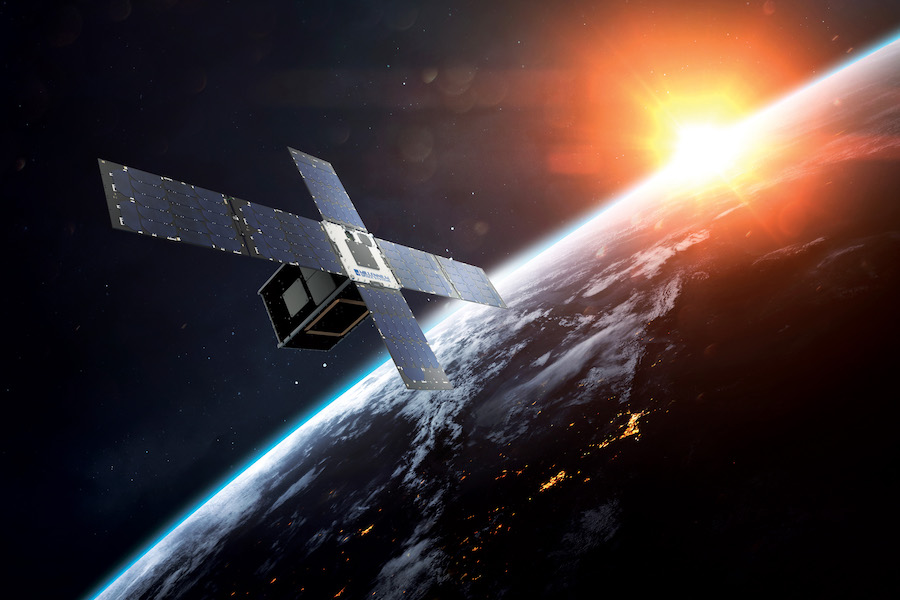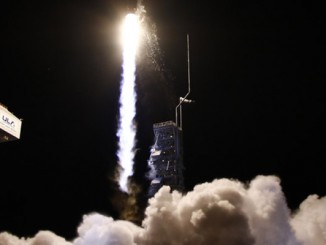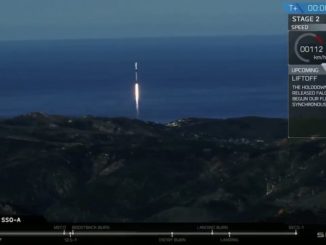
TriSept Corp. has announced plans for a commercial technology demonstration mission set for launch next year on a Rocket Lab Electron vehicle to test a deployable conductive tape, made by Tethers Unlimited, that could help small satellites more quickly fall out of orbit at the end of their missions.
The Dragracer mission, announced Aug. 5, will test a Terminator Tape device developed by Tethers Unlimited, headquartered near Seattle. TriSept, based in Virginia, specializes in planning, integrating and managing small satellite missions.
The Terminator Tape is a thin extendable tether designed to generate aerodynamic drag to accelerate the re-entry of small satellites, helping to prevent the creation of space junk.
“One of the partners in the mission is Tethers Unlimited,” said Jason Armstrong, director of launch integration services at TriSept, in an interview with Spaceflight Now. “They do deployable tether devices, which are stored energy structures. When it’s deployed, it changes the overall structure of the spacecraft, thereby changing the drag.”
Millennium Space Systems, owned by Boeing and based in El Segundo, California, will assemble the 55-pound (25-kilogram) spacecraft for the Dragracer mission. TriSept officials said the suitcase-sized spacecraft will be built on the Raptor satellite bus, based on a 12U CubeSat form factor.
The Dragracer spacecraft will launch in early 2020 on a rideshare mission aboard a Rocket Lab Electron rocket with several other small satellites, Armstrong said.
Small satellites have tested de-orbit devices before, including drag sails and tethers. But many of those satellites tested their de-orbit systems at the end of their missions, sometimes months or years after launch. Experiments using tethers in space have produced mixed results, and many tethers have failed to extend once in orbit.
Armstrong said launching a dedicated tech demo mission, like Dragracer, allows engineers to “realize the benefits of it immediately.”
“Rather than it being attached to a spacecraft, being launched and flying a three-to-five-year mission, and then deploying this mechanism and see what we get as a result, the (Dragracer) mission … is completely about the demonstration,” he said.
The Dragracer satellite will split into two nearly identical pieces after launch. One half of the spacecraft carries the Terminator Tape, and the other does not, allowing engineers to compare how their altitudes change over time.
“Immediately upon separation from the launch vehicle, the two halves of the spacecraft will come part from each other, and then we can deploy the tether on one half of the spacecraft and get immediate data that we can then characterize the capability of the system,” Armstrong said.
The Electron rocket will deliver the Dragracer mission to a polar orbit roughly 250 miles (400 kilometers) above Earth, below the altitude of the International Space Station. After a few days in space, the tether will extend to a length of about 820 feet (250 meters). The tape measures about 1.5 to 2 inches wide, Armstrong said.
Gravity gradient forces will pull the tether in a vertical orientation, stabilizing the satellite’s attitude and increasing drag.
A preflight analysis predicts the Terminator Tape will allow the spacecraft with the tether to re-enter the atmosphere and burn up within two-to-four weeks, while the other satellite — acting as a control in the experiment — is expected to re-enter in eight-to-12 months, according to Armstrong.
Engineers want to learn which types of de-orbit devices work best for certain types of satellites.
“What we’re intending to do is to get actual flight data to substantiate that analysis, and then you can use scale factors to know what size of deployable tether or drag mechanism you would need to install for a specific size of spacecraft in order to get the re-entry timeline that you want,” Armstrong said.

For the Dragracer mission, TriSept is in charge of integrating the spacecraft with the Electron launch vehicle, and also procures the dispenser to house and eject the satellite during the launch sequence.
“I would say that with the Terminator Tape approach, the benefit that it has is it’s a much smaller volume and mass,” Armstrong said. “And it’s very much less complex as far as the capabilities that you have to have for actuating it and deploying the system. On-board, all we have to have is a small timer circuit with a little battery in it. That’s very attractive … You’re not introducing risk or any highly complex systems.”
“This rideshare mission slated for launch aboard our Rocket Lab Electron is very significant as Millennium Space Systems, supported by TriSept’s seasoned launch integration team, tackles one of the biggest challenges facing our industry today,” said Lars Hoffman, senior vice president of global launch services at Rocket Lab, in a statement. “We look forward to working closely with these two space industry innovators in preparation for an exciting milestone launch of the Dragracer orbital debris initiative.”
Assuming the Terminator Type experiment produces good results, Armstrong said: “I think it could stand alone on its own as a feasible system for the small satellite community.”
Email the author.
Follow Stephen Clark on Twitter: @StephenClark1.



